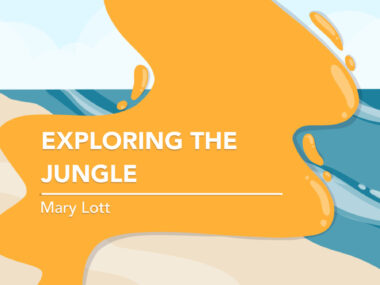Surviving ‘Snowmageddon’ with cold agglutinin disease
Cold weather is bad for people with CAD, requiring preparations
Written by |

“Those look like snow clouds,” I said to my dad on a recent Sunday afternoon.
“Those definitely look like snow clouds,” he responded.
I’d warned him the previous Friday that snow was predicted for the following Tuesday. I remember Dad asking if I thought it would actually snow this time, as snow had been predicted before but it never materialized. “No,” I said. “We’ll probably just have a bit of rain.”
We moved to Auburn, Alabama, in 1962, from the snowy climes of Pennsylvania. I was 7 years old at the time. It had been fun to sled down a hill and return indoors to cups of hot chocolate covered with marshmallows.
My siblings and I built a really cool snow fort with a tunnel. You had to slide through the tunnel to enter the fort. Then, we’d have snowball fights with the kids next door.
I remember looking out my bedroom window one night at the freshly fallen snow. The sky was a velvety black, with stars twinkling above. The yard was covered with a bluish-white blanket of snow that glittered diamonds in the full moonlight. Yes, snow had been my friend.
Now, snow is a fiend.
Snow only happens when it is very cold outside, and cold is something I avoid. For me, cold begins a process of red blood cell destruction called hemolysis because I have cold agglutinin disease (CAD). The best defense against the effects of CAD is to stay warm.
I have a reputation in my family of paying attention to storms, hurricanes, and other weather conditions. This means that I’d been watching this storm system as it developed for a few days. Even so, my answer to my dad on that Sunday was based on my wishes rather than research.
The best defense is a good offense
It’s better to be safe than sorry, so I began my preparations. I purchased extra chemical hand warmers. I went to the grocery store on Monday to buy provisions that would last until Thursday. I reviewed my clothing: socks, a covering for my nose and mouth, gloves, and hats.
My dad lives across town from me. He’s 99, so I don’t encourage him to go out and about by himself. I reviewed his provisions and determined that he was prepared. The problem for me would be getting to him if there was a sustained power outage.
As a Southerner, I’m not experienced in driving in icy weather. It changes the focus of my life. As a CAD patient, I also needed to be a little more proactive than normal. If I was detained during my travel across town, I’d need a way to keep warm and dry. I filled the car with gas and put an extra blanket with other provisions in the back.
By Monday night, both Dad and I were ready. I was still hoping the storm would miss us. The meteorologist has been wrong before, but then again, so have I. Tuesday would tell the tale.
On Tuesday morning, I looked out the window. The sky was overcast, and the clouds were a solid mass of gray that covered the sky from horizon to horizon. I kept looking at weather.com, which showed a huge snowstorm covering the entire Gulf Coast — including Auburn. As the morning wore on, though, I became more hopeful. It wasn’t snowing here! Maybe we’d be lucky.
Nope! The meteorologist had been correct. I noticed the first fat, white flakes a little after noon. I grumbled about it and then busied myself with a writing assignment.
The problem with snow
It isn’t that I don’t think snow is pretty. I just see it as dangerous and deadly now. I don’t immediately notice when my red blood cells are damaged. But then I’ll experience hemolysis symptoms, and my urine becomes dark as the red blood cells are eliminated.
After that, I’ll become extremely fatigued. Brain fog, due to less oxygen being available for brain function, is also a result of the destruction of blood cells. Muscle aches and pains are also a common effect. For me, one of the saddest parts is my inability to sing church hymns with the congregation on Sunday mornings.
It is now Wednesday night. The roads are passable, but it’s still cold outside. I remained indoors on Tuesday but drove cautiously across town today. Dad was quite well. I don’t know if the few times my toes became blue will have repercussions. With CAD, it’s always a waiting process.
Note: Cold Agglutinin Disease News is strictly a news and information website about the disease. It does not provide medical advice, diagnosis, or treatment. This content is not intended to be a substitute for professional medical advice, diagnosis, or treatment. Always seek the advice of your physician or other qualified health provider with any questions you may have regarding a medical condition. Never disregard professional medical advice or delay in seeking it because of something you have read on this website. The opinions expressed in this column are not those of Cold Agglutinin Disease News or its parent company, Bionews, and are intended to spark discussion about issues pertaining to cold agglutinin disease.







Leave a comment
Fill in the required fields to post. Your email address will not be published.